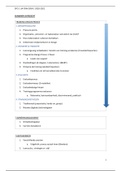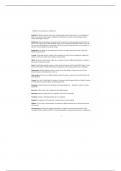Samenvatting
Summary Corporate Financial Management - BEC22306
- Instelling
- Wageningen University (WUR)
- Boek
- Corporate Finance
Summary of the course: Corporate Financial Management. This summary includes lectures about the chapters; 1, 4, 5, 6, 7, 8, 10, 12, 15, 16, 18, 19, 20, 22, 24, 25 and 26. Written in October/November 2018.
[Meer zien]














